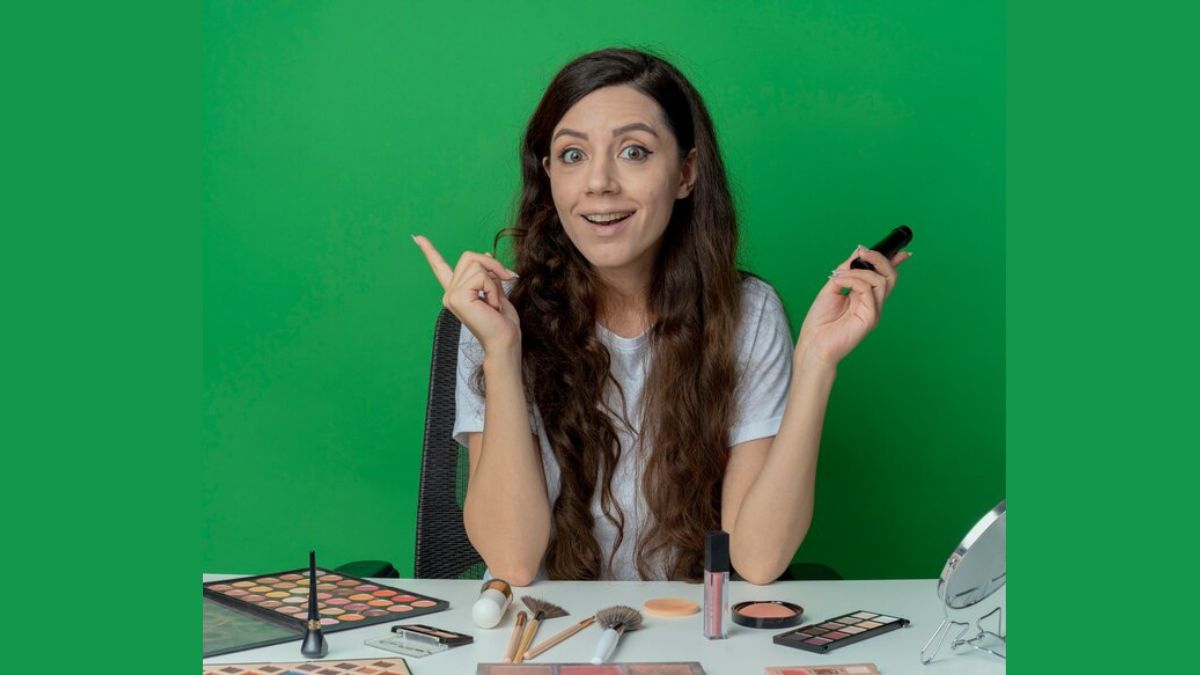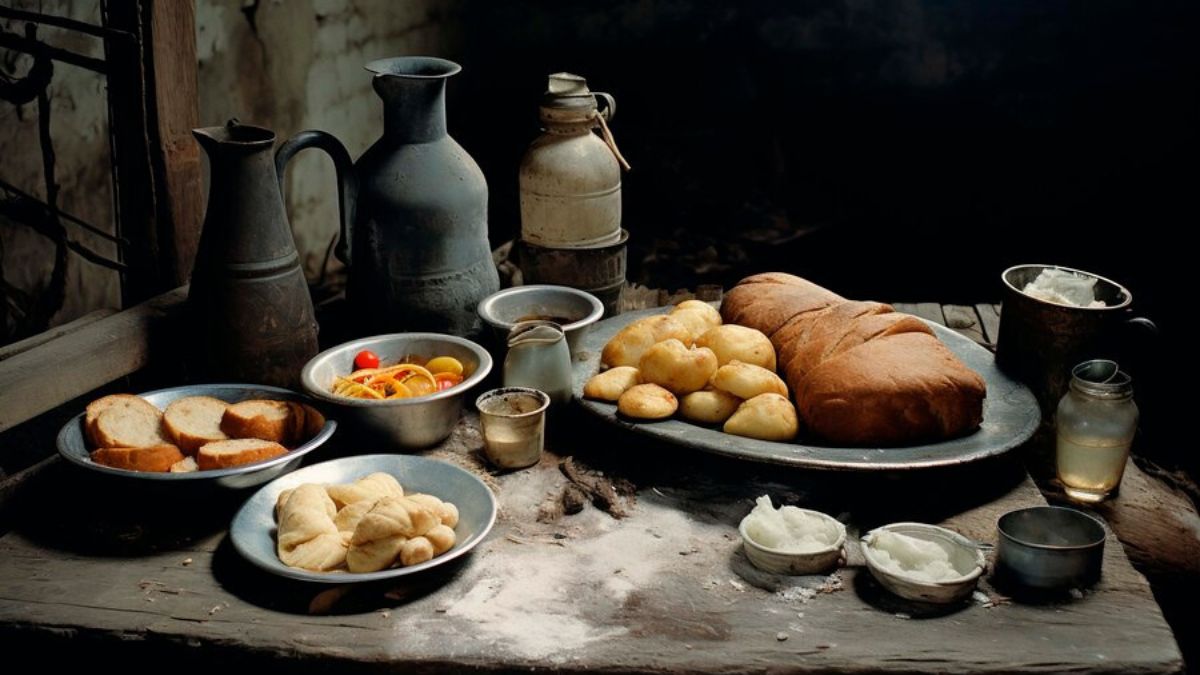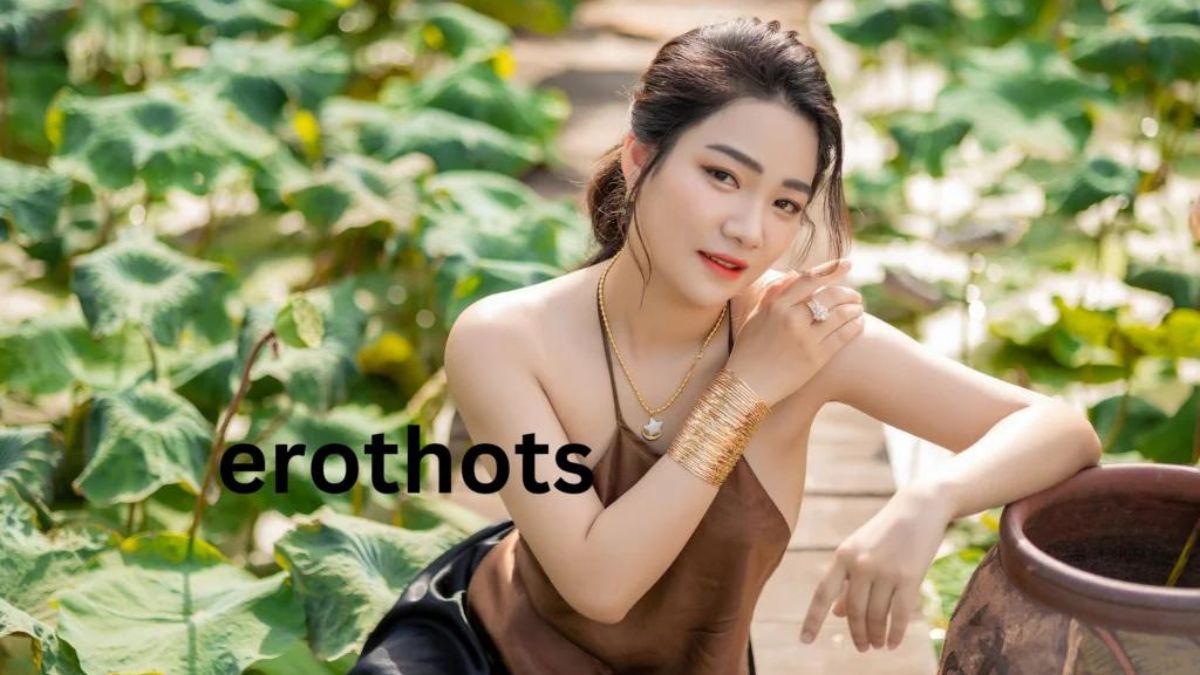FASHION
Exploring the Elegance of 1830s Fashion: A Look Back in Time

Step into the time machine with us as we journey back to the elegant and romantic era of 1830s fashion. A period marked by intricate silhouettes, opulent fabrics, and exquisite accessories that defined a generation. Join us as we delve into the enchanting world of 1830s style and explore its lasting impact on modern fashion trends.
Social and Cultural Influences on Fashion
The 1830s were marked by significant social and cultural changes that influenced fashion trends. With the rise of industrialization, a growing middle class emerged, leading to a shift in attitudes towards clothing. Women’s roles in society also evolved during this time, impacting their fashion choices.
The Romantic movement played a pivotal role in shaping 1830s fashion, emphasizing nostalgia for the past and nature-inspired elements like floral patterns and delicate fabrics. The era’s political climate also influenced attire, with sartorial choices reflecting national pride and solidarity.
Influential figures like Queen Victoria set style standards with her elegant gowns and accessories, inspiring women across social classes to emulate her looks. The accessibility of fashion magazines further disseminated trends, bridging the gap between high society and the masses.
The social and cultural influences on 1830s fashion were diverse and dynamic, reflecting a period of change and innovation in both garment construction and design aesthetics.
Silhouettes and Styles of the 1830s
In the 1830s, fashion took on a distinct silhouette that reflected the societal norms and cultural influences of the era. Women’s dresses featured high waistlines with fitted bodices and full skirts that emphasized a tiny waist. This style, known as the Romantic Era silhouette, exuded elegance and femininity.
The sleeves of women’s garments also evolved during this time, transitioning from large gigot sleeves to more restrained styles like pagoda or bishop sleeves. These details added a touch of sophistication to overall ensembles. Men’s fashion in the 1830s saw tailcoats becoming popular for formal occasions, paired with trousers and vests to create a polished look.
Accessories such as bonnets, gloves, shawls, and parasols were commonly worn to complement outfits and add an extra layer of charm. The intricate embroidery work and delicate lace trimmings further enhanced the beauty of garments during this period. The styles of the 1830s embodied gracefulness and refinement that continue to inspire contemporary designers today.
Materials and Fabrics Used in 1830s Fashion
In the 1830s, fashion was all about luxurious materials and intricate fabrics that added depth and texture to garments. Silk was highly favored for its sheen and drape, often used in gowns and evening wear. Velvet made a statement with its plush feel, especially in formal attire.
Cotton remained a popular choice for day dresses due to its accessibility and comfort. Delicate muslin was also widely used for its lightweight qualities, perfect for creating ethereal looks. Wool played a significant role in outerwear, providing warmth during colder seasons.
Embroidery and lace embellishments were prominent features on many garments, adding an air of elegance and sophistication. Rich brocades and jacquards brought opulence to ensembles, showcasing intricate patterns and designs.
The materials used in 1830s fashion reflected the romanticism of the era while emphasizing craftsmanship and attention to detail.
Accessories and Adornments of the Time
Accessories and adornments played a significant role in 1830s fashion, adding an extra layer of elegance to ensembles. Women adorned their heads with intricate bonnets embellished with feathers, ribbons, and flowers. These accessories not only served as fashionable statements but also reflected the wearer’s social status.
Gloves were a staple accessory for both men and women during this era. Made from delicate fabrics like silk or lace, gloves were worn as symbols of refinement and sophistication. Men often sported top hats made from felt or beaver fur, adding a touch of formality to their attire.
Jewelry was another essential element of 1830s fashion. Women wore statement pieces such as chokers, brooches, and earrings adorned with pearls or precious stones. These accessories added a touch of glamour to their high-necked dresses and intricate hairstyles.
Accessories in the 1830s were more than just decorative items – they were symbols of wealth, taste, and social standing in society at the time.
Famous Fashion Icons of the 1830s
In the 1830s, there were several fashion icons who left a lasting impact on the era with their unique style and influence. One of these icons was Queen Victoria, whose preference for elegant and modest attire set trends that many women emulated. Another notable figure was Empress Eugénie of France, known for her love of luxurious fabrics and intricate designs.
On the other hand, Beau Brummell, a prominent British dandy, revolutionized men’s fashion by popularizing tailored suits and impeccable grooming standards. Charles Worth, often considered the first fashion designer in history, also made waves during this time with his innovative approach to dressmaking.
These iconic figures not only shaped the fashion landscape of the 1830s but also paved the way for future generations of designers and trendsetters. Their legacy continues to inspire modern interpretations of vintage styles and timeless elegance in today’s fashion world.
Modern Interpretations and Revivals of 1830s Fashion
In recent years, the elegance and grace of 1830s fashion have experienced a resurgence in modern interpretations. Designers and fashion enthusiasts are revisiting the romantic silhouettes and intricate details that defined this era. From billowy sleeves to high necklines, elements of 1830s style can be seen on runways and in everyday wear.
Contemporary designers are putting their own twist on 1830s fashion by incorporating modern fabrics, colors, and patterns while staying true to the essence of the time period. Celebrities and influencers alike have been spotted sporting dresses with empire waists or oversized bonnets reminiscent of the 1830s.
With the rise of vintage-inspired looks, it’s no surprise that elements from the 1830s continue to captivate audiences today. Whether it’s a subtle nod to the past or a full-blown Victorian-inspired ensemble, modern interpretations of 1830s fashion showcase a blend of nostalgia and innovation that resonates with fashion-forward individuals around the world.
The Enduring Legacy and Influence of 1830s Fashion
As we journeyed through the elegance of 1830s fashion, it’s evident that this era left a lasting impact on the world of style. The intricate silhouettes, opulent fabrics, and attention to detail continue to inspire designers and fashion enthusiasts alike.
From the high society elites to the working-class women, 1830s fashion reflected societal values and cultural influences in a unique way. The legacy of this period can be seen in modern interpretations on runways around the globe.
Whether it’s the romantic sleeves or dramatic skirts, elements of 1830s fashion have stood the test of time. The influence of this era can be spotted in contemporary designs, showcasing how history continues to shape our present-day aesthetic sensibilities.
So next time you see a billowy sleeve or a high neckline gracing a garment, remember that you might just be witnessing a nod to the elegant and sophisticated world of 1830s fashion.
FASHION
Vermilion fashions sa: Ultimate Guide

In the bustling arena of fashion, where every hue tells a story, vermilion stands out as an intriguing shade that demands attention. But what makes it so alluring? Vermilion, a brilliant red or scarlet, not only captivates the eye but also carries its own distinctive cultural and historical significance. For those with a penchant for fashion, understanding vermilion fashions sa trends can open up a world of possibilities. This guide aims to unravel the mysteries of vermilion in fashion, offering insights and inspiration for enthusiasts and professionals alike.
A Historical Canvas Painted in Vermilion
Vermilion has a storied past. Used extensively in ancient art and textiles, it symbolizes vitality and passion. Historically, it was derived from the mineral cinnabar, making its use both rare and luxurious. In ancient China and Rome, vermilion was synonymous with wealth and status, often adorning the garments of the elite. Understanding this context allows us to appreciate vermilion’s evolution from a color of the past to a modern fashion staple.
The vibrant hue was not just limited to clothing; it played a crucial role in art. Renaissance painters used vermilion to create vivid masterpieces, a testament to its enduring appeal. This historical foundation lays the groundwork for vermilion’s contemporary significance in fashion.
Today, vermilion fashions sa continues to inspire designers, with its rich history informing modern aesthetics. From traditional attire to avant-garde creations, vermilion is as versatile as it is vibrant, making it a beloved choice for designers worldwide.
The Psychology of Red and Its Impact on Fashion
Why are we so drawn to red? The color red elicits strong emotions, symbolizing everything from love to power. Vermilion, with its unique shade, magnifies these effects, creating a sense of allure and energy. In fashion, color psychology plays a pivotal role in how a piece is perceived and the message it conveys.
Red is known to increase heart rates and boost excitement, making it a popular choice for evening wear and statement pieces. Vermilion, specifically, strikes a balance between boldness and warmth, appealing to those who wish to stand out without overwhelming their audience. Understanding these elements can help fashion enthusiasts make informed choices when incorporating vermilion fashions sa into their wardrobes.
For designers, utilizing vermilion effectively can transform a collection, adding depth and emotion. Its psychological impact ensures that when used in fashion, vermilion offers both a visual and emotional experience.
Vermilion in Contemporary Fashion Collections
Modern fashion houses have embraced vermilion fashions sa with open arms, incorporating it into seasonal collections. Top designers like Valentino and Gucci have showcased vermilion in various forms, from elegant gowns to casual wear. This trend highlights vermilion’s adaptability, proving that it can be both sophisticated and approachable.
In recent years, fashion weeks around the globe have witnessed an uptick in vermilion-themed outfits. This resurgence suggests a renewed interest in bold colors, as consumers seek to express individuality and confidence through their fashion choices. For budding designers, observing these trends offers valuable insights into how vermilion can be creatively integrated into new collections.
The beauty of vermilion lies in its versatility. Whether it’s a statement piece or a subtle accent, incorporating this vibrant hue can elevate any wardrobe, making it a favorite among fashion-forward individuals.
Crafting Your Personal Style with Vermilion
Incorporating vermilion into your personal style doesn’t require a complete wardrobe overhaul. Start by adding small accents, like a vermilion scarf or handbag, to test the waters. These pieces can add a pop of color to neutral outfits, instantly elevating your look.
Another approach is to invest in a few key vermilion pieces that align with your existing wardrobe. Consider a vermilion blazer or dress that can be dressed up or down, depending on the occasion. This strategy ensures versatility and maximizes wearability, allowing you to experiment without committing to a full-color transformation.
Finally, blending vermilion with complementary colors can create stunning visual contrasts. Pairing it with whites, blacks, or even soft pastels can soften its intensity while maintaining its impact. This technique allows for creative expression, perfect for those who love to play with fashion.
Accessorizing with Vermilion for Maximum Impact
Accessories offer a subtle way to introduce vermilion into your repertoire. Jewelry, such as earrings or bracelets, in this striking shade can add elegance without overpowering your outfit. The key is to balance these pieces with your overall look, ensuring harmony and cohesion.
Footwear is another avenue for vermilion expression. Bold shoes can serve as focal points in an ensemble, drawing attention and making a statement. Whether it’s vermilion boots or strappy sandals, footwear provides an exciting opportunity to showcase this vibrant color.
Additionally, consider makeup as a form of accessorizing. A vermilion lip or nail polish can tie an outfit together, providing a polished and sophisticated finish. The possibilities are endless, and the impact is undeniable.
The Cultural Significance of Vermilion Across the Globe
Vermilion transcends borders, carrying cultural significance worldwide. In India, it symbolizes purity and auspiciousness, often used in traditional ceremonies and bridal wear. In Japan, vermilion torii gates mark sacred spaces, representing protection and prosperity.
These cultural associations add layers of meaning to vermilion fashion, enriching its narrative and appeal. For designers and fashion enthusiasts, understanding these contexts can inspire creativity and offer a deeper appreciation for the color’s place in global fashion.
By recognizing vermilion’s diverse cultural roots, fashion becomes more than just clothing; it transforms into a meaningful expression of heritage and identity.
Sustainable Fashion and Vermilion’s Place in Eco-friendly Design
In today’s eco-conscious world, sustainability is paramount. Vermilion’s boldness lends itself well to sustainable fashion, where quality over quantity reigns. Investing in timeless vermilion pieces ensures longevity and reduces waste, aligning with eco-friendly values.
Designers are increasingly focusing on sustainable vermilion fabrics, such as organic cotton and recycled materials. These initiatives not only preserve the environment but also offer consumers guilt-free fashion choices that don’t compromise on style.
Individuals seeking to adopt a sustainable wardrobe can look for brands that prioritize ethical production and use vermilion responsibly. This conscious choice supports eco-friendly practices while allowing for fashionable expression.
Exploring Vermilion’s Role in High Fashion and Street Style
Vermilion is not confined to high-fashion runways; it thrives in street style as well. Streetwear enthusiasts often use vermilion to make bold statements, integrating it into casual and edgy looks. This adaptability ensures vermilion remains relevant across different fashion spheres.
High fashion, on the other hand, uses vermilion to craft luxurious and artistic designs. Gowns and couture pieces in this shade captivate audiences, showcasing the versatility and elegance of vermilion. This dual presence in both high fashion and street style highlights its universal appeal.
Fashion influencers play a significant role in bringing these trends to the masses, demonstrating how vermilion can be worn by anyone, anywhere. Their creative interpretations inspire audiences to experiment and redefine their personal style with vermilion’s vibrant touch.
The Future of Vermilion in Fashion Design
As fashion evolves, vermilion’s role in design continues to expand. Innovations in fabric technology and digital design tools allow for new interpretations and applications of this captivating color. Designers are exploring unconventional uses of vermilion, pushing boundaries and redefining norms.
The future of vermilion in fashion is bright, with endless possibilities for creative expression. Its timeless appeal ensures that it will remain a staple in the fashion industry, continuously reinventing itself to meet the demands of modern consumers.
Fashion enthusiasts can look forward to exciting developments as vermilion continues to inspire and captivate, proving its place as a color that transcends trends and stands the test of time.
Vermilion in Fashion Technology and Digital Integration
Technology is revolutionizing the fashion industry, and vermilion is no exception. Digital tools enable designers to experiment with vermilion in virtual environments, allowing for innovative design processes and collaborations.
Virtual try-ons and augmented reality experiences offer consumers the chance to explore vermilion fashion from the comfort of their homes. These technologies enhance the shopping experience, providing a personalized and interactive approach to fashion.
The integration of vermilion into digital platforms signifies a new era of fashion, where color and technology merge to create an immersive and dynamic industry landscape.
Conclusion
Vermilion’s vibrant allure and rich history make it a fascinating subject in the world of fashion. Its ability to evoke emotion, tell stories, and transcend cultural boundaries ensures its enduring relevance. For fashion enthusiasts and professionals, vermilion offers a canvas for creative expression, innovation, and personal style.
FASHION
Sally’s Beauty Near Me: Your Ultimate Guide

Welcome to the ultimate guide to Sally’s Beauty Near Me! If you’re someone who loves all things beauty, then you’ve likely heard of Sally’s Beauty Supply. It’s not just a store; it’s a beauty lover’s paradise filled with everything from skincare essentials to the latest hair trends. In this blog post, we’ll take a deep dive into the history of Sally’s, what sets them apart from other beauty stores, and how you can find your nearest location. So grab your makeup bag and let’s explore the world of Sally’s Beauty together!
The History of Sally’s Beauty Supply
Sally’s Beauty Supply has a rich history that dates back to the early 1960s when it was founded by Sally and her husband in New Orleans. What started as a small shop offering beauty products soon grew into a nationwide chain with over 5,000 stores today.
Over the years, Sally’s Beauty has become synonymous with quality products, expert advice, and unparalleled customer service. The company has always been at the forefront of innovation in the beauty industry, constantly introducing new brands and products to meet customers’ evolving needs.
With a strong commitment to empowering customers to look and feel their best, Sally’s Beauty continues to be a trusted destination for professionals and DIY enthusiasts alike. Whether you’re searching for the latest trends or classic essentials, Sally’s Beauty Supply is your go-to place for all things beauty-related.
What Makes Sally’s Different?
Sally’s Beauty stands apart from other beauty supply stores in more ways than one. One key factor that sets Sally’s apart is its extensive range of products. From hair care to skincare, makeup to nail care, Sally’s offers a wide selection for all your beauty needs.
Moreover, Sally’s prides itself on its knowledgeable staff who are always ready to assist you with expert advice and recommendations tailored to your specific needs. Whether you’re a seasoned beauty enthusiast or a beginner looking to explore new products, the staff at Sally’s will guide you every step of the way.
Another standout feature of Sally’s Beauty is its commitment to quality. The store carries top-notch brands known for their effectiveness and reliability, ensuring that customers get access to high-quality products that deliver results.
Additionally, Sally’s often runs promotions and exclusive deals that make shopping for your favorite beauty essentials even more affordable. Keep an eye out for special offers and discounts when you shop at Sally’s Beauty Supply!
Finding a Sally’s Beauty Near Me
Are you on the hunt for a Sally’s Beauty supply store near you? Look no further! Finding a Sally’s Beauty location is easier than ever with their user-friendly website. Simply visit the store locator page, enter your zip code, and voila – a list of nearby stores will pop up in no time.
Whether you’re searching for hair care products, makeup essentials, or skincare must-haves, Sally’s has got you covered. With numerous branches spread across the country, there’s bound to be a convenient location just around the corner from you.
Not sure which branch is closest to your home or workplace? Don’t fret! The interactive map feature on Sally’s website makes it a breeze to pinpoint the exact store nearest to you. So say goodbye to endless searches and hello to beauty shopping made simple at Sally’s Beauty Supply.
How to Shop at Sally’s Beauty
When stepping into a Sally’s Beauty store, you’re greeted by rows of beauty products beckoning to be explored. Start your shopping journey by browsing the aisles filled with an array of hair care, skincare, makeup, and nail products.
For those seeking specific items, don’t hesitate to ask the knowledgeable staff for assistance. They are there to guide you and offer recommendations based on your needs and preferences.
Make sure to take advantage of any ongoing promotions or discounts available in-store. Keep an eye out for special deals that can help you save money on your favorite beauty essentials.
Before making a purchase, consider checking online reviews or asking fellow customers about their experiences with certain products. This can help ensure you make informed decisions when adding items to your cart.
Once you’ve selected your must-have items, head over to the checkout counter where friendly staff will assist you with completing your purchase hassle-free.
Tips for Saving Money at Sally’s
Looking to save some money on your next beauty haul at Sally’s? Here are a few tips to help you get the most bang for your buck!
First off, sign up for Sally Beauty Rewards – it’s free and you’ll earn points with every purchase that can be redeemed for discounts. Keep an eye out for exclusive member-only deals and promotions.
Another way to save is by shopping during sales events like Black Friday or Cyber Monday. Sally’s often offers great discounts during these times, so mark your calendar!
Don’t forget to check out their clearance section both in-store and online. You might just stumble upon hidden gems at discounted prices.
Follow Sally’s Beauty Supply on social media platforms like Instagram and Facebook. They sometimes post special deals or coupon codes that can help you save even more on your favorite products!
Reviews and Testimonials from Customers
Customers rave about their experiences at Sally’s Beauty Supply, praising the wide selection of products and knowledgeable staff. Many customers appreciate the convenience of finding all their beauty needs in one place, from haircare to skincare and everything in between. The friendly atmosphere at Sally’s makes shopping for beauty products a pleasant experience, with helpful associates always ready to offer recommendations and advice.
Numerous positive reviews highlight the quality of products available at Sally’s Beauty Supply, noting that they often find exclusive brands and unique items not easily found elsewhere. Customers also mention the competitive prices at Sally’s, making it a go-to destination for budget-conscious shoppers looking for top-notch beauty essentials.
Whether you’re a seasoned beauty enthusiast or just starting your journey into self-care, the glowing reviews from satisfied customers make it clear that Sally’s Beauty is a must-visit destination for all your beauty needs.
Exclusive Offers and Deals at Sally’s
Are you on the lookout for exclusive offers and deals at Sally’s Beauty Supply? You’re in luck! Sally’s regularly rolls out exciting promotions that cater to all your beauty needs. From discounts on popular hair care products to limited-time makeup bundles, there’s always something special waiting for you at Sally’s.
Keep an eye out for their seasonal sales where you can score fantastic deals on top brands. Whether you’re a seasoned beauty enthusiast or just starting your journey, these offers make it easy to stock up on must-have items without breaking the bank. Don’t miss out on their loyalty program either – it rewards frequent shoppers with even more savings and perks.
By staying updated on Sally’s website or signing up for their newsletter, you’ll be the first to know about upcoming promotions and exclusive deals. So why wait? Head over to your local Sally’s Beauty today and treat yourself to some amazing finds!
Conclusion:
As you consider where to find your next beauty products, don’t overlook the convenience and quality that Sally’s Beauty Supply offers. With a rich history of providing top-notch products and exceptional customer service, Sally’s has become a trusted name in the beauty industry.
By visiting your local Sally’s Beauty store today, you can explore a wide range of haircare, skincare, makeup, and nail products that cater to all your beauty needs. Whether you’re looking for professional-grade tools or trendy new shades, Sally’s has it all under one roof.
Not only does shopping at Sally’s offer a diverse selection of high-quality products, but it also provides an opportunity to save money with exclusive deals and discounts. You can stock up on your favorite essentials while staying within your budget.
So why wait? Head over to your nearest Sally’s Beauty Supply store today and experience firsthand why so many loyal customers trust their beauty needs to this iconic brand.
FASHION
Unveiling the Rich Heritage: Crafting the Perfect Old Fashioned Recipe

Step into a world where tradition meets sophistication, where history mingles with the present – welcome to the realm of the Old Fashioned cocktail. A timeless classic that has stood the test of time, the Old Fashioned is more than just a drink; it’s a journey back in time, a sip of rich heritage and craftsmanship. Join us as we unravel the secrets behind crafting the perfect Old Fashioned recipe, from its intriguing origins to tips for adding your own unique twist. Get ready to raise your glass and savor every moment as we delve into this iconic cocktail experience.
The History of the Old Fashioned Recipe
Embark on a historical journey as we explore the intriguing origins of the Old Fashioned cocktail. Dating back to the early 19th century, this iconic drink is believed to have its roots in Louisville, Kentucky. Originally known simply as “the whiskey cocktail,” it was a straightforward mix of spirits, sugar, water, and bitters.
As time passed and tastes evolved, bartenders began experimenting with different variations of the classic recipe. The term “Old Fashioned” emerged in the late 19th century to refer to cocktails made in the original style – no frills or fancy garnishes, just pure elegance in a glass.
The Old Fashioned gained widespread popularity during Prohibition when its simple yet sophisticated flavors appealed to both seasoned drinkers and newcomers alike. Today, this timeless concoction continues to hold its own among a sea of trendy libations, reminding us that sometimes old-fashioned is truly timeless.
The Key Ingredients and How to Choose Them
When it comes to crafting the perfect Old Fashioned, selecting the right ingredients is key. It all starts with a good quality whiskey – typically bourbon or rye. The rich and robust flavors of these spirits are essential for creating the signature taste of this classic cocktail.
Next up, you’ll need some sugar to sweeten things up. Traditionalists opt for a sugar cube muddled with bitters, but simple syrup can also do the trick. The bitters add depth and complexity to the drink, so be sure not to skimp on them.
To round out the flavor profile, a citrus twist or slice of orange peel is often used as a garnish. This adds a hint of brightness that balances out the richness of the whiskey and sugar.
When choosing your ingredients, aim for high-quality options that complement each other well. Experimenting with different combinations can help you find your perfect Old Fashioned recipe tailored to your taste preferences.
Step-by-Step Guide to Making the Perfect Old Fashioned
Crafting the perfect Old Fashioned is an art that requires attention to detail and a love for quality ingredients. To start, gather your tools: a mixing glass, muddler, bar spoon, strainer, and rocks glass. Next, choose your whiskey wisely – whether you prefer bourbon or rye will influence the flavor profile of your drink.
Begin by muddling a sugar cube with Angostura bitters in the mixing glass until it dissolves. Add ice cubes and pour in your chosen whiskey. Stir gently but deliberately to chill and dilute the mixture just right. Strain over fresh ice into a rocks glass.
For garnish, express citrus oils from a twist of orange peel over the drink before dropping it in. The final touch? A Luxardo cherry for added sweetness.
Sip slowly and savor each nuanced sip of this timeless cocktail that has stood the test of time.
Variations of the Old Fashioned Recipe
One of the beauties of the Old Fashioned cocktail is its versatility. While the classic recipe calls for whiskey, sugar, bitters, and a twist of citrus peel, there are countless variations that allow you to put your own spin on this timeless drink.
For a fruity twist, try muddling in some fresh berries or slices of peach before adding the rest of the ingredients. This adds a touch of sweetness and complexity to the cocktail.
If you prefer a smokier flavor profile, consider using mezcal or peated scotch instead of traditional bourbon or rye whiskey. The distinctive taste will give your Old Fashioned a whole new dimension.
Experimenting with different types of bitters can also elevate your drink. From aromatic to orange or even chocolate bitters, each variety brings its unique flavor profile to the mix.
Whether you like it sweet, smoky, spicy, or herbal – there’s an Old Fashioned variation out there waiting for you to discover and savor.
Best Types of Whiskey for an Old Fashioned
When it comes to crafting the perfect Old Fashioned, the type of whiskey you choose plays a crucial role in determining the drink’s overall flavor profile. Each variety of whiskey brings its own unique characteristics to the cocktail, making the selection process an essential step in achieving that ideal balance of flavors.
Bourbon is a popular choice for an Old Fashioned due to its sweet and smooth profile, complementing the sweetness of sugar and bitters in the cocktail. Rye whiskey, on the other hand, offers a spicier and drier taste that can add depth and complexity to your drink.
For those looking for something different, consider experimenting with Scotch whisky or even Japanese whisky for a unique twist on this classic recipe. Each type brings its own distinct set of flavors that can elevate your Old Fashioned to new heights.
Finding the best whiskey for your Old Fashioned comes down to personal preference and experimentation. Don’t be afraid to try different varieties until you discover the one that perfectly suits your palate.
Tips and Tricks for a Unique Twist on This Classic Drink
Looking to add a modern twist to the classic Old Fashioned recipe? Here are some tips and tricks to elevate this timeless cocktail.
Experiment with different sweeteners like maple syrup or honey for a unique flavor profile. Don’t be afraid to play around with infused syrups or flavored bitters to customize your drink.
Try incorporating fresh herbs like rosemary or thyme into your Old Fashioned for an aromatic touch. Citrus peels can also add a refreshing zing to your cocktail – think orange, lemon, or even grapefruit twists.
Consider barrel aging your Old Fashioned for added depth and complexity. This technique imparts rich flavors from the wood that can take your drink to the next level.
Don’t shy away from using unconventional garnishes such as smoked cinnamon sticks, dehydrated fruit slices, or edible flowers. These little details can make a big difference in presentation and taste.
Conclusion
Crafting the perfect Old Fashioned recipe is not just about mixing ingredients; it’s about connecting with a rich heritage and timeless tradition. From its humble beginnings to its enduring popularity today, the Old Fashioned has truly stood the test of time.
As you experiment with different variations and whiskey types, remember that the beauty of this cocktail lies in its simplicity and versatility. Whether you prefer a classic approach or enjoy adding your own twist, the Old Fashioned recipe offers endless possibilities for customization.
-

 FOOD10 months ago
FOOD10 months agoSure! Here are seven engaging blog post titles related to the concept of a “retail food product
-

 GENERAL9 months ago
GENERAL9 months agoTroubleshooting Common VRChat Login Issues: Tips and Tricks
-

 INSURANCE9 months ago
INSURANCE9 months agoNavigating the Future of Insurance with Technical Reserves in Flow Insurance
-

 TECH9 months ago
TECH9 months agoDiscover Reliable Abithelp Contact Solutions with JustAnswer
-

 FOOD10 months ago
FOOD10 months agoSure! Here are seven engaging blog post titles related to a “502 food blog
-

 GENERAL11 months ago
GENERAL11 months agoExploring the World of Erothots: What You Need to Know
-

 HEALTH10 months ago
HEALTH10 months agoMaine Health Jobs: A Comprehensive Guide
-

 TECH5 months ago
TECH5 months agoWhat You Need to Know About the 346 Area Code
